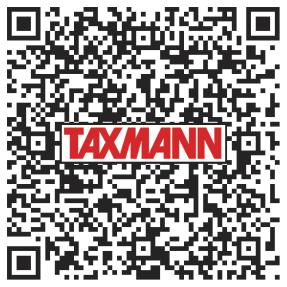









Goods and Services Tax (GST) in India, like any comprehensive system, includes provisions to correct errors in any order, certificate, or document. Under Section 161 of the Central Goods and Services Tax (CGST) Act, 2017, a Proper Officer is authorised to rectify any error that is apparent on the face of the record in any order or decision. This provision allows for the correction of inadvertent mistakes, clerical errors, or omissions, ensuring that orders accurately reflect the law’s intent and the facts of the case.
In this article, we will explore Section 161 of the CGST Act and examine the types of errors that can be corrected under this section.
The GST law provides1 that when there is an error apparent on the face of the records in any decision, order, notice, certificate, or other document, the issuing authority may rectify such an error. The relevant extract of the provision is as follows:
Without prejudice to the provisions of section 160, and notwithstanding anything contained in any other provisions of this Act, any authority, who has passed or issued any decision or order or notice or certificate or any other document, may rectify any error which is apparent on the face of record in such decision or order or notice or certificate or any other document, either on its own motion or where such error is brought to its notice by any officer appointed under this Act or an officer appointed under the State Goods and Services Tax Act or an officer appointed under the Union Territory Goods and Services Tax Act or by the affected person within a period of three months from the date of issue of such decision or order or notice or certificate or any other document, as the case may be
Provided that no such rectification shall be done after a period of six months from the date of issue of such decision or order or notice or certificate or any other document:
Provided further that the said period of six months shall not apply in such cases where the rectification is purely in the nature of correction of a clerical or arithmetical error, arising from any accidental slip or omission:
Provided also that where such rectification adversely affects any person, the principles of natural justice shall be followed by the authority carrying out such rectification. 1
From this, it is clear that the scope of this provision is broad, allowing correction of any apparent error on the face of the records in any document. In cases of adverse rectification orders, the affected party must be given an opportunity for a hearing. The significant question pertains to the impact of the ‘non-obstante’ clause and what constitutes an error apparent on the face of the records.
Additionally, GST law includes specific provisions for rectifying an Advance Ruling2 and orders passed by the Appellate Tribunal3
Section 161 of the CGST Act starts with the phrase “notwithstanding anything contained in any other provisions of the Act,” raising questions about whether individuals seeking rectification of an advance ruling or an Appellate Authority’s order should apply under the general Section 161 or the specific sections 102/113(2) of the Act.
The non-obstante clause in a general provision does not supersede specific legal provisions. It takes effect in cases of inconsistency or conflict between provisions. Therefore, for rectification of an order from an advance ruling or an Appellate Authority, applications should be made under the specific sections for those procedures. The interpretation of the non-obstante clause is supported by several Supreme Court cases:
• A non-obstante clause clarifies4 the scope of enactment and should be understood as an expression of legislative caution rather than a limitation of its ambit.
• There must be a clear inconsistency between two enactments to give overriding effect to a non-obstante clause5
2 Section 102 of the CGST
3 Section 113(2) of the CGST
4 Dominion of India v. Shrinbai A. Irani (Civil Appeal No. 154 of 1943)
5 R.S. Ragunath vs. State of Karnataka (Civil Appeal No. 5617 of 1990)
Particulars Time Limit Special Points
Time Limit for Applying for Rectification of Errors
Three months from the date of issue of the document
Time Limit for Completion of the Procedure of Rectification
Six months from the date of the document’s issue
The time limit for applying and completing rectification is calculated from the date the order is issued. The Supreme Court has held6 that the date of signing the order is relevant for calculating limitation. However, if the other party seeks relief, the date of communication to the other party is relevant. Delays in filing a rectification application cannot be condoned7
The six-month period does not apply8 to clerical or arithmetical errors resulting from accidental slips or omissions. Such errors can be corrected anytime.
The term’ error apparent on the face of the record’ is not explicitly defined under GST law. However, the Oxford Dictionary defines ‘apparent’ as ‘clearly visible or understood; obvious.’ Thus, an error apparent on the face of the record in GST refers to mistakes easily identifiable without extensive interpretation, evident from the records themselves. These can include clerical mistakes, arithmetical errors, errors of law, or errors of fact.
The Delhi Government has clarified9 that the following can fall under the scope of rectification:
• Errors where the demand amount has already been fully deposited or reversed, but this was not considered in the demand order.
• Arithmetical errors or errors in categorising amounts under IGST, CGST, and SGST in the demand order.
• Instances where the taxpayer’s reply was not considered by the department in issuing the order.
• Multiple Show Cause Notices (SCNs) were issued for the same issue in the same year.
• Situations where annexures to SCNs are missing or wrongly attached.
6 Collector of Central Excise v. M.M. Rubber and Co. 1992 taxmann.com 555 (SC)
7 [Shree Ganesh Forging Co v. Union of India [(2014) 45 taxmann.com 556 (Calcutta)]
8 Second proviso to Section 161 of the CGST Act
9 F. No. 3(543)/GST/POLICY/2024/1312-18, Dated 01/03/2024 read with F. No. 3(543)/GST/POLICY/2024/1355-60, dated 2103-2024
The principles established by various courts on this matter are summarised below:
S. No Particulars
Reference from the Case Decisions
1. A mistake that can be discovered by a process of elucidation or argument or a debate, not to be considered as a mistake apparent from the record Mrs. Freny Rashid Chennai vs Assistant Controller of Estate Duty [(1973) 90 ITR 31 (Andhra Pradesh)],
2. Reassessment order was passed without looking into books of account
3. ‘Record’ includes all the materials present in the record
Gold Finch Hotels Pvt. Ltd v. Deputy Commissioner of Commercial Taxes, Bangalore [2014 49 taxmann.com 475 (Karnataka)]
Gammon India Ltd. v Commissioner of Income Tax [1995] 80 taxman 591 (Bombay)
Mistake apparent from the record is a mistake that is manifest, plain, or obvious, a mistake that can be realised without a debate or dissertation. A mistake which can be discovered by a process of elucidation or argument or a debate, cannot be considered to be a mistake apparent from the record. The scope of the expression’ mistake apparent from the record’ is much wider than the expression’ mistake apparent on the face of the record.
Where reassessment order was passed without looking into books of account, application for rectification was to be accepted to verify books of account.
4. ‘Record’ encompasses all errors related to records from all assessment years.
5. Reference to a document which is outside of records is not permissible
6. ‘Error apparent from the record’ means no long-drawn conclusion is required
Commissioner of Income Tax v. Keshri Metal (P.)(Ltd). [1999] 104 taxmann 360 (SC)
Commissioner of Income Tax v. Keshri Metal (P.)(Ltd). [1999] 104 taxmann 360 (SC)
Kairali Ayurvedic Health Resort (P.) Ltd v. Commercial Tax Officer [2015] 53 taxmann.com 9 Kerala (HC)
Record comprising of the entire proceedings, including documents and material produced by the parties and taken on record by the authorities, which were available at the time of passing of the order, which is the subject-matter of proceedings for rectification. They cannot go beyond the records and look into fresh evidence or material which were not on record at the time the order sought to be rectified was passed.
Record is not confined to the mistakes in the record of that assessment year alone, but the mistake can also arise in relation to the record for other assessment years also.
Hon’ble Supreme Court held that the mistake must be apparent from the record, and reference to documents outside the records is not permissible.
Error apparent on the face of the records means that the mistake is so apparent that no further investigation or enquiry is required. Only one conclusion can be drawn.
7. ‘Error apparent from the record’ does not specify the nature or character of the mistake and discovery of new material
Jeet Mal Ram Gopal, Hathras v. Addl. Judge (Revision) Sales Tax, Aligarh Range, Aligarh (1975) 36 STC 305
8. An inconsistency with retrospective amendment in the law is a mistake apparent from the record
9. Rectification for nonconsideration of reply
Commissioner of Income Tax v. E. Sefton & Co (P.) Ltd [1989 47 taxmann 392 (HCCalcutta)]
Mulchand Patti Mfg. Co. vs Income Tax Officer [(1987) 20 ITD 355 (Jaipur)[ (1987) 28 TTJ 287 (Jaipur)]
10. Reassessment without book examination Gold Finch Hotels Pvt. Ltd v. Deputy Commissioner of Commercial Taxes, Bangalore [2014 49 taxmann.com 475 (Karnataka)]
Section 22 of the Uttar Pradesh Trade Act, 1948, which provides for the rectification of the mistakes, is not specified the nature or character of the mistake beyond saying that it should be apparent on the record. It also does not predicate the nature and extent of the scrutiny that will make the mistake apparent, provided the scrutiny is confined to the record as it is.
If the assessment order is plainly inconsistent with the specific and clear provision and amended retrospectively, indisputably, there is a mistake apparent from the record.
ITAT held that the word ‘mistake’ also includes anything amiss, i.e. anything that is missed out.
Where a reassessment order was passed without looking into books of account, an application for rectification was to be accepted to verify books of account.
5.1. Exclusion of the Time Limit for Rectification Application in Filing an Appeal
Rectification is for correcting visible mistakes on the face of records, while appeals are remedies for taxpayer grievances over demand orders. There is no specific provision for excluding the time taken for rectification application processing from the time limit for filing an appeal.
According to Rule 142 of the CGST Rules, 2017, upon passing a rectification order under Section 161, the proper officer must upload a summary of the rectification order in Form GST DRC-08, leading to the issuance of a rectified order under GST law. Therefore, the time limit for filing an appeal starts from the date of the rectified order. The Supreme Court in Hind Wire Industries Ltd. v. CIT [(1995) 80 taxman 79 (SC)] stated that ‘order’ includes amended and rectified orders, meaning the appeal period starts from the communication date of the rectified order.
However, if a rectification application is rejected and the appeal period of four months (three months plus one-month extension) has lapsed, the appellate authority might reject the appeal in the absence of a specific provision excluding the rectification period. Thus, without a legal provision for time exclusion for rectification errors, accepting or rejecting an appeal beyond the four-month limit is uncertain.
In such cases, taxpayers may seek relief from the High Court. In Tvl. SKL Exports v. Deputy Commissioner (ST)(GST)(Appeal) [2024] 163 taxmann.com 451 (Madras), the Madras High Court directed the appellate authority to admit an appeal filed after a rectification rejection, provided the taxpayer filed the appeal promptly and paid the required tax.
When uncertain whether an error qualifies for rectification under Section 161, taxpayers should also file an appeal within the time limit to avoid complications and ensure they remain within the legal framework.


Founded 1972


Evolution From a small family business to a leading technology-oriented Publishing/Product company


Expansion

Launch of Taxmann Advisory for personalized consulting solutions
Our Vision

Aim
Achieve perfection, skill, and accuracy in all endeavour

Growth
Evolution into a company with strong independent divisions: Research & Editorial, Production, Sales & Marketing, and Technology

Future
Continuously providing practical solutions through Taxmann Advisory
Editorial and Research Division
Over 200 motivated legal professionals (Lawyers, Chartered Accountants, Company Secretaries)
Monitoring and processing developments in judicial, administrative, and legislative fields with unparalleled skill and accuracy
Helping businesses navigate complex tax and regulatory requirements with ease

Over 60 years of domain knowledge and trust
Technology-driven solutions for modern challenges
Ensuring perfection, skill, and accuracy in every solution provided
Corporate Tax Advisory
Trusts & NGO Consultancy
TDS Advisory
Global Mobility Services
Personal Taxation
Training
Due Diligence
Due Dilligence
Advisory Services
Assistance in compounding of offences
Transactions Services
Investment outside India
High-quality advice for all your Income-tax, GST, FEMA, and UAE Corporate Tax queries
From a distinguished panel of experts









